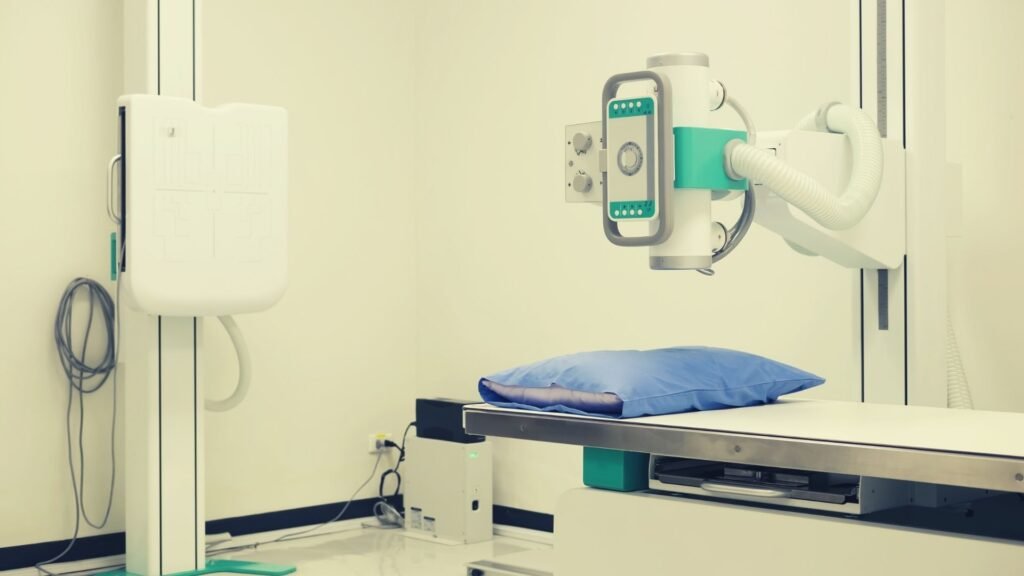Fluoroscopy-Guided Injections for Chronic Pain
You have just been diagnosed with chronic pain and you are told that you need to come in to the office for a procedure to help alleviate the pain. When you arrive for your procedure and are brought back to the procedure room, you see a large machine over the table and the doctor and nurses all in protective gear. You may be wondering what is this machine and is it safe?
These are some of the questions that are asked when a patient comes in for the first time to receive a procedure to alleviate their chronic pain. In this blog post I want to explain why it is so important to have your pain injections or pain procedure guided by fluoroscopy, and what fluoroscopy-guided injections are. I am also going to go over some common questions asked by patients regarding the safety.
What are Fluoroscopy-Guided Injections?
Fluoroscopy-guided injections are injections or procedures that are guided by x-ray to help relieve chronic pain. These out-patient procedures are non surgical and are usually done in the office or at a medical facility.
What is Fluoroscopy?
Fluoroscopy is a type of medical imaging that shows a continuous x-ray image on a monitor. It allows the doctor to view the image on the screen, allowing he/she to see body part movement or the contrast (x-ray dye) move through the body in detail.
Why do you want to have your chronic pain injection/procedure done with Fluoroscopy?
The reason it is standard for pain specialists to use fluoroscopy guidance is because this not only ensures accuracy and precision of the pain procedure, but it also helps to reduce risks.
Before having any type of chronic pain injection/procedure done, it’s a good idea to make sure that the doctor performing the procedure uses always uses fluoroscopy for guidance.
What is the process of receiving a Fluoroscopy-Guided Injection?
When a patient comes in for a procedure, the patient will be escorted into the procedure room after vitals are taken in the pre-procedure area. He/she will lay on the exam table while the doctor takes imaging of the area being treated, using the x-ray machine. Once an accurate picture has been achieved, the doctor will numb the injection site and insert a needle into the targeted area. To confirm accurate placement of the injection site, the doctor then injects contrast (x-ray dye) to confirm the correct placement of the needle.
Is Fluoroscopy safe?
Fluoroscopy is relatively safe and only administers a small amount of radiation during your procedure. The reason your doctor and nurses wear protective gear is because they are doing several procedures a day and need to limit their exposure as much possible.
Frequently Asked Questions
Does Fluoroscopy hurt?
No, the patient will not feel any pain while receiving fluoroscopy imaging.
How long does Fluoroscopy imaging take?
This type of imaging is very quick and can be done in a matter of minutes.
What is contrast (x-ray dye)?
It is an agent used to help make the x-ray images more apparent and improve the accuracy of the placement of the needle during a chronic pain injection/procedure. It ensures safety that the medication is injected into the proper place.
In conclusion
Now that you know what fluoroscopy is and why it is used, you can have a better idea of what is happening the next time you come in for a pain procedure. Knowledge is power and may help answer any questions or alleviate a little bit of angst that you may be experiencing before your procedure.
Our goal at ISPW is to help educate or answer frequently asked questions by patients. We want every patient to feel comfortable and know exactly what is happening when they walk through our doors.
For further questions about any procedure or about Integrated Spine, Pain and Wellness in general, please feel free to respond to this blog post or direct message us on Instagram or Facebook. We are here for you to answer any questions that you may have.
Stay connected with us on social media and look out for our next post.
Here’s to good health and less pain,
Dr. Goyle






